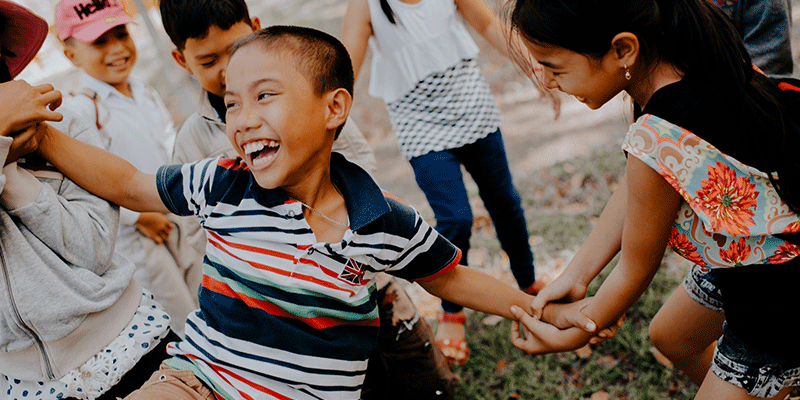
By nature, children this age can be more concerned about their own needs and even act selfishly. Often they refuse to share anything that interests them, and they do not easily interact with other children, even when playing side by side, unless it’s to let a playmate know that they would like a toy or object for themselves. There may be times when your child’s behavior may make you upset, but if you take a close look, you’ll notice that all the other toddlers in the playgroup probably are acting the same way.
At age two, children view the world almost exclusively through their own needs and desires. Because they can’t yet understand how others might feel in the same situation, they assume that everyone thinks and feels exactly as they do. And on those occasions when they realize they’re out of line, they may not be able to control themselves. For these reasons, it’s useless to try to shape your child’s behavior using statements such as “How would you like it if she did that to you?” Save these comments until your child is older; then she’ll be able to really understand how other people think and feel and be capable of responding to such reasoning.
Because your two-year-old’s behavior seems only self-directed, you also may find yourself worrying that he’s spoiled or out of control. In all likelihood, your fears are unfounded, and he’ll pass through this phase in time. Highly active, aggressive children who push and shove usually are just as “normal” as quiet, shy ones who never seem to act out their thoughts and feelings.
Ironically, despite your child’s being most interested in himself, much of his playtime will be spent imitating other people’s mannerisms and activities. Imitation and “pretend” are favorite games at this age. So as your two-year-old puts his teddy to bed or feeds his doll, you may hear him use exactly the same words and tone of voice you use when telling him to go to sleep or eat his vegetables. No matter how he resists your instructions at other times, when he moves over into the parent role, he imitates you exactly. These play activities help him learn what it’s like to be in someone else’s shoes, and they serve as valuable rehearsals for future social encounters. They’ll also help you appreciate the importance of being a good role model, by demonstrating that children often do as we do, not as we say.
The best way for your two-year-old to learn how to behave around other people is to be given plenty of trial runs. Don’t let her relatively antisocial behavior discourage you from getting playgroups together. At first it may be wise to limit the groups to two or three children. And although you’ll need to monitor their activities closely to be sure that no one gets hurt or overly upset, you should let the children guide themselves as much as possible. They need to learn how to play with one another, not with one another’s parents.
Last Updated 11/2/2009
Source Caring for Your Baby and Young Child: Birth to Age 5 (Copyright © 2009 American Academy of Pediatrics)
The information contained on this Web site should not be used as a substitute for the medical care and advice of your pediatrician. There may be variations in treatment that your pediatrician may recommend based on individual facts and circumstances.






